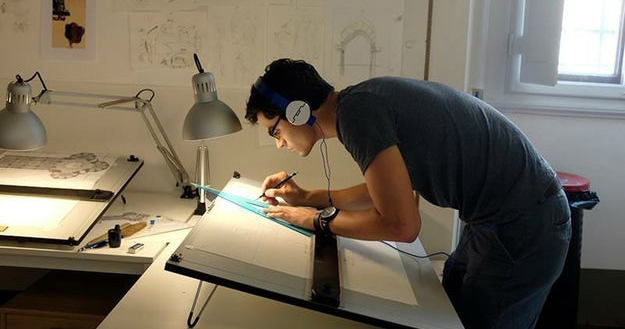The 5th annual A+Awards — the world’s largest awards program for architecture and products — is open for entries! Click here to find out how to submit your project, and act fast: the final deadline for submissions is this Friday, Jan. 27.
We are only one month in, but 2017 is already shaping up to be a stellar year for penda. The Beijing- and Vienna-based architecture firm, winner of the coveted Emerging Firm of the Year Award at last year’s A+Awards, was recently awarded first place in the competition to design a huge pavilion for the International Horticultural Expo 2019 in the Chinese capital. The winning project — named “A Thousand Yards” by the studio — constitutes another significant step on penda’s whirlwind path to international prominence, a journey characterized by a feverish ambition to deliver typological and material innovation at every opportunity.

A Thousand Yards comprises a vast grid of wooden building blocks that contain five main functions of the pavilion, ranging from greenhouses and gardens to teahouses and exhibition halls. Each block connects at the corners to its neighbors, offering a continuous space inside and a meandering chain of elevated walkways surrounded by luscious planting. The standardization of building elements is a key driver behind the design, with components being prefabricated off-site and then assembled according to the programmatic zones outlined in the master plan. This highly efficient construction method is married to a flexible modular system that will allow the pavilion to evolve after the Expo, providing valuable public spaces for local community.
Penda occupies a unique position at the intersection between architecture and landscape design, weaving nature into many of their proposals and constantly blurring the boundary between internal and external conditions. The success of “A Thousand Yards” proves the resounding appeal of this approach, as well as the firm’s astute understanding of programmatic needs and highly responsive solutions to the cultural context within which the pavilion will be constructed. Founder Chris Precht — a juror for the Fifth Annual A+Awards — sat down with Architizer to discuss this extraordinary project, the bright future of penda and his thoughts on what makes for an award-winning project.

Penda constructed a highly detailed timber model (left) to communicate their vision for the pavilion, supplemented by striking renderings (right) that give a strong sense of the project’s huge scale and complexity.
Paul Keskeys: What was your original inspiration for “A Thousand Yards”?
Chris Precht: Well, I guess as a formal inspiration we took some ancient strategies of Chinese city planning, where each parcel is adapting and influencing its neighbors and forming a bond with each other. But in the end it was more about the typological inspiration than the formal one. To create a structure that forms space for exhibitions and supports nature in an equal way. A structure that can be used by plants to grow upon and form a public garden for all visitors of the International Horticultural Expo.
In what ways do you think your experience as a local firm in Beijing helped you to conceive a winning entry for this competition?
I think most of our work benefits from the fact that Dayong and myself were born and grew up with a very different background. Asian architecture and the European way of building is rooted in a very different tradition and architectural typologies. This mix and the different perspective to look at a site’s issue can be very productive to find solutions. I wouldn’t say that it is of advantage to be a Beijing office, but to have a various set of inspirations and traditions within an office makes the process of architecture and the discourse within the office for sure a more interesting one …
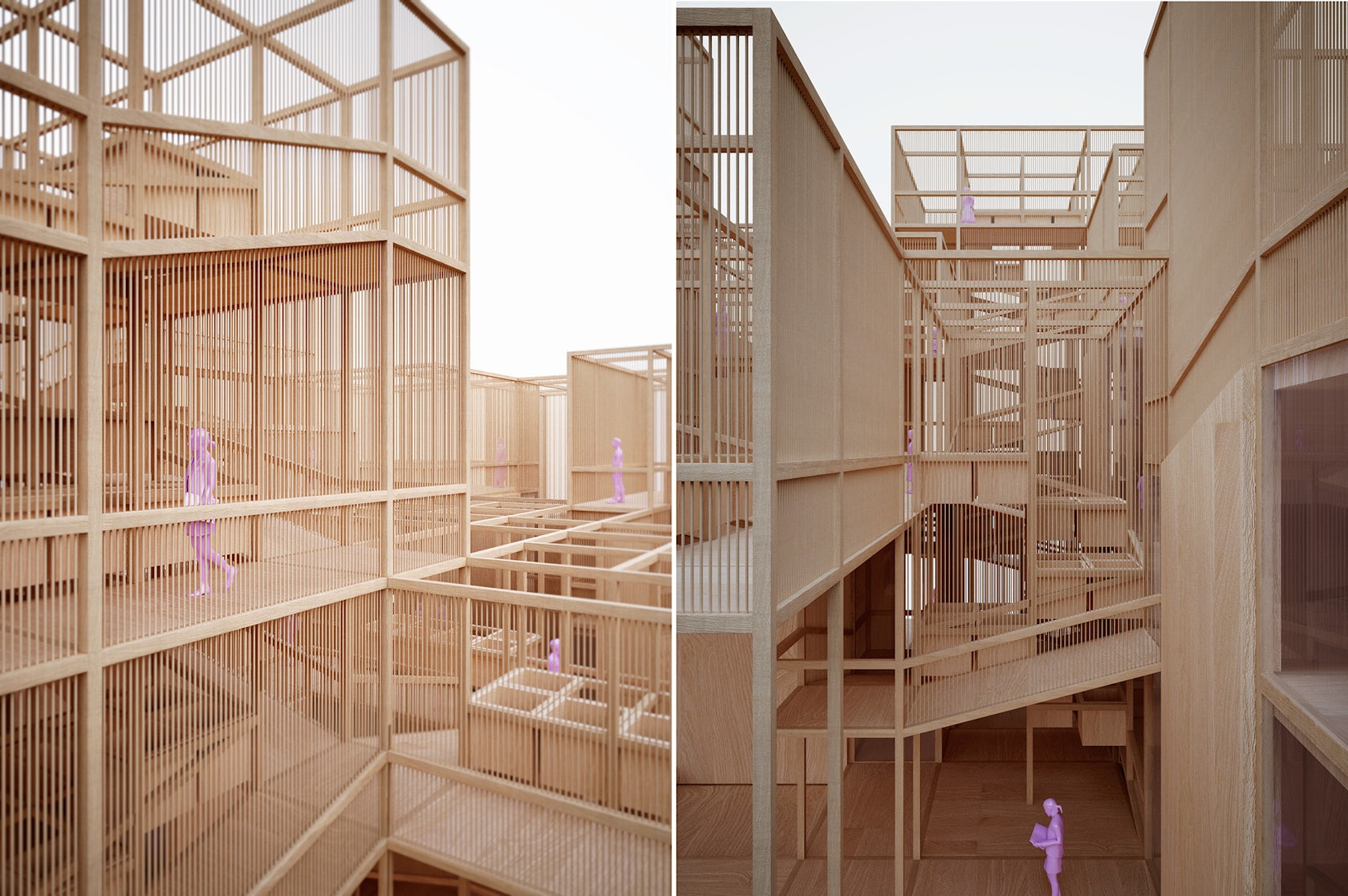
Details of the wooden model are populated by penda’s distinctive pink scale figures …

… While emotive visualizations illuminate the beautiful blend of architecture and nature throughout the site.
In what ways does the project build off some of your previous works, and what new ideas are on show?
I do believe that whenever the brief allows it, we try to plan in a close connection with plants and with natural materials. Materials that have a low carbon footprint and can be reused after the life-cycle of the building. It also incorporates many ideas of prefabrication and modular thoughts. We love projects that are developed as a building system rather than a building that is defined by its shapes. Performance, not form.
The project’s modular nature lends it a high degree of flexibility. How do you envisage the structure evolving over time to adapt for the changing programmatic needs of the area?
Yeah, specially for a temporary building, like a pavilion, one has to think about the after-use of the building and all its components. We have seen so many photos of wrecking balls and sledgehammer demolition the building after an event like an expo. This ends not only the architectural dreams, but also buries all materials and expensive resources with it. I think there is a need to plan smarter like that. And modular systems that can be reused after an event could be one direction to go.
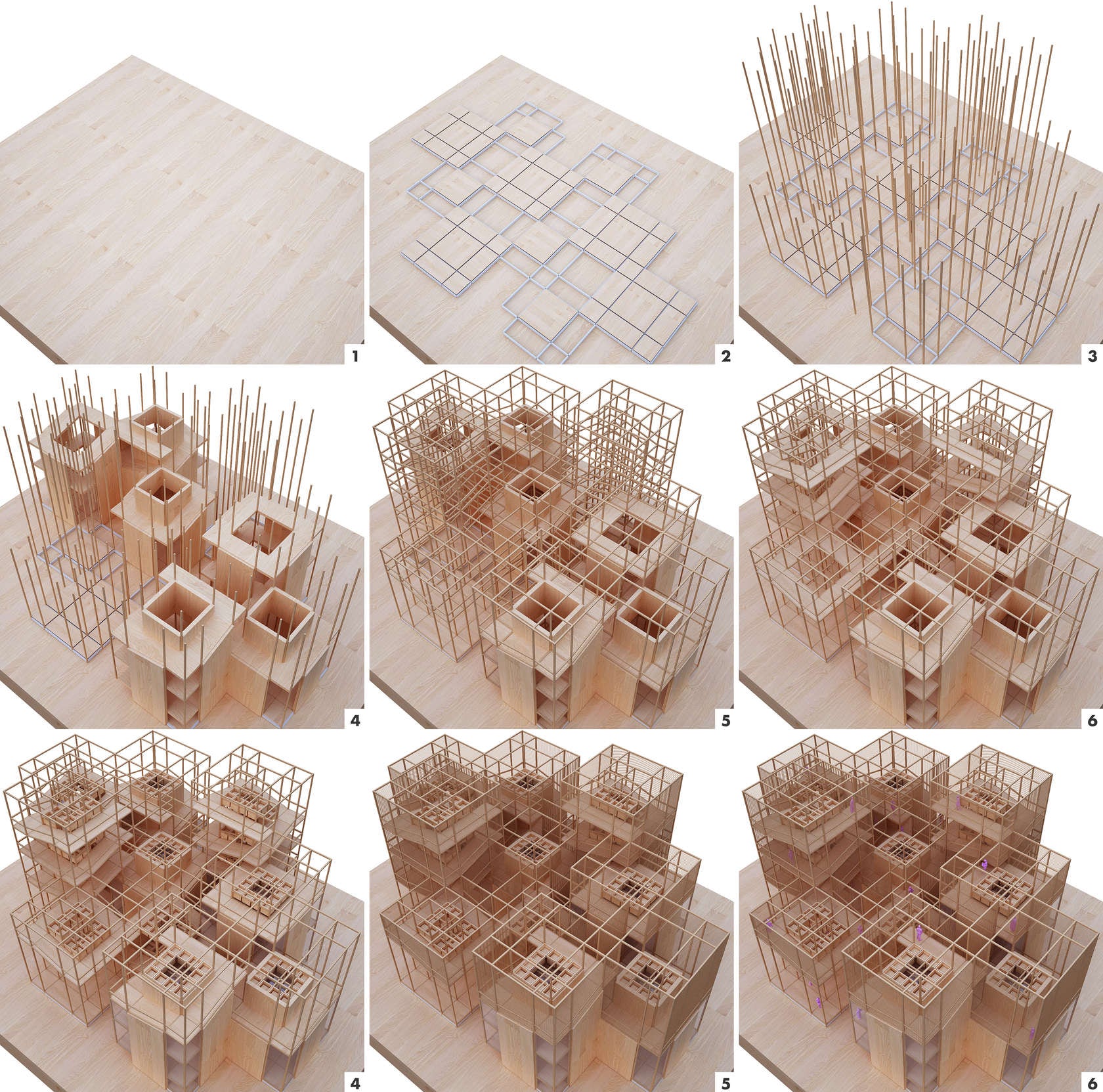
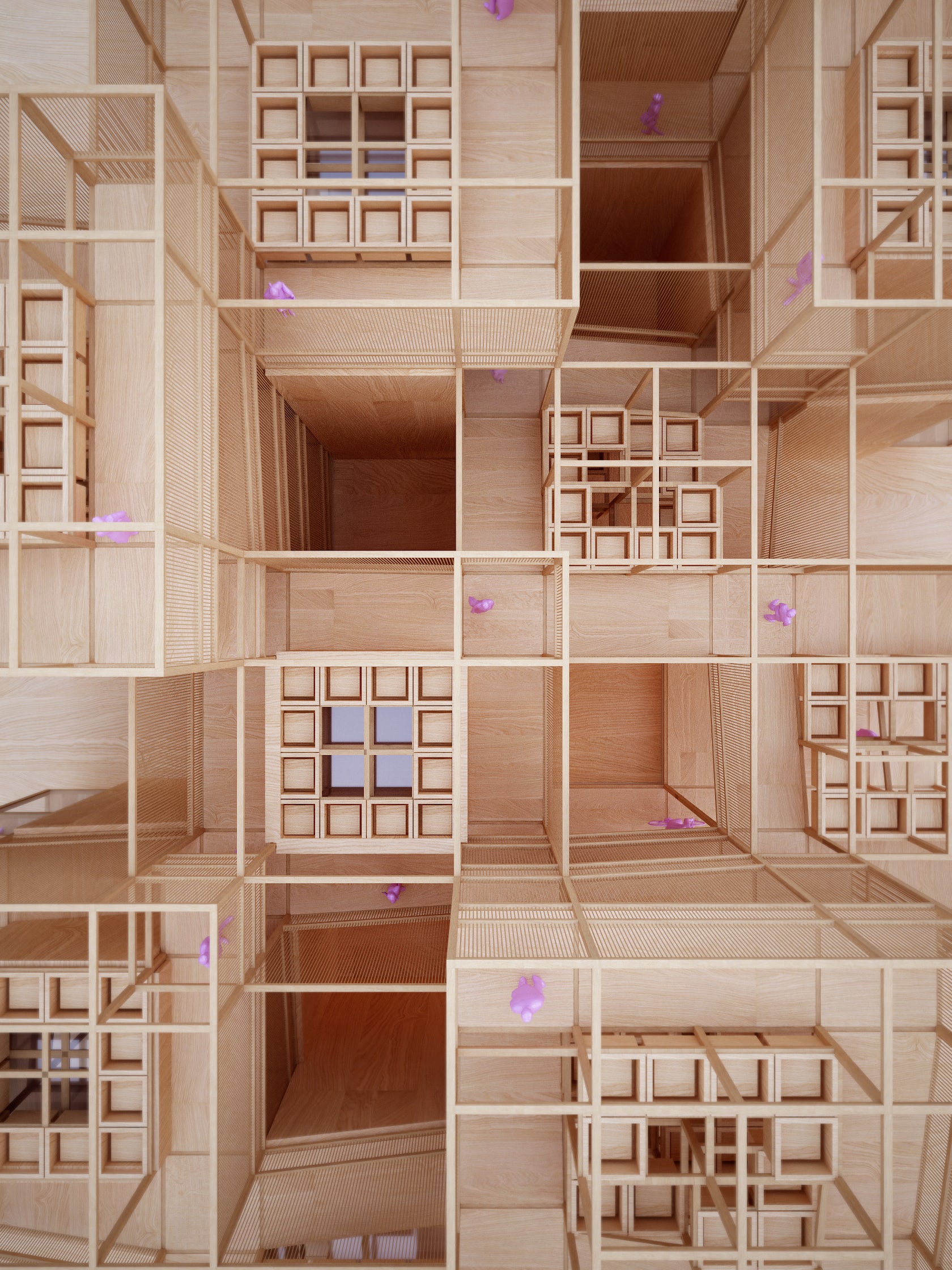
Penda’s model was constructed using the same modular system that will be employed at an architectural scale on-site in 2019.
As you said, it also gives us a lot of flexibility to react to certain changes before the pavilion opens. From the time we started working on the project to the opening, almost four years pass. New contractors and tenants are coming in, and each one has different needs and demands, which the architects need to address. That means lots of changes on the way. Having a flexible system in place lets us react very quickly; for example, if a restaurant needs a larger kitchen, we can add a module without redesigning the whole building. That gives us a great amount of flexibility in the upcoming planning process.
Your mediums for communicating concepts — models, diagrams, GIFs and renderings — combine to give a powerful vision of the project. Can you explain how these varied mediums inform your design process?
They are mostly a communication tool, not so much a design tool. The general problem for architects, including us, is that the image and the concept of a project is very clear for us because we are so close to the project for a long period of time. In the architect’s head, the ideas are very distinct, but the hard part is to communicate those ideas to the client. Models help to explain the space, diagrams for the core ideas, renderings to show the potential outcome and animation, or GIFs can describe the process of building, the order of construction. Specially when using modular systems, explaining these ideas to the client is very important.

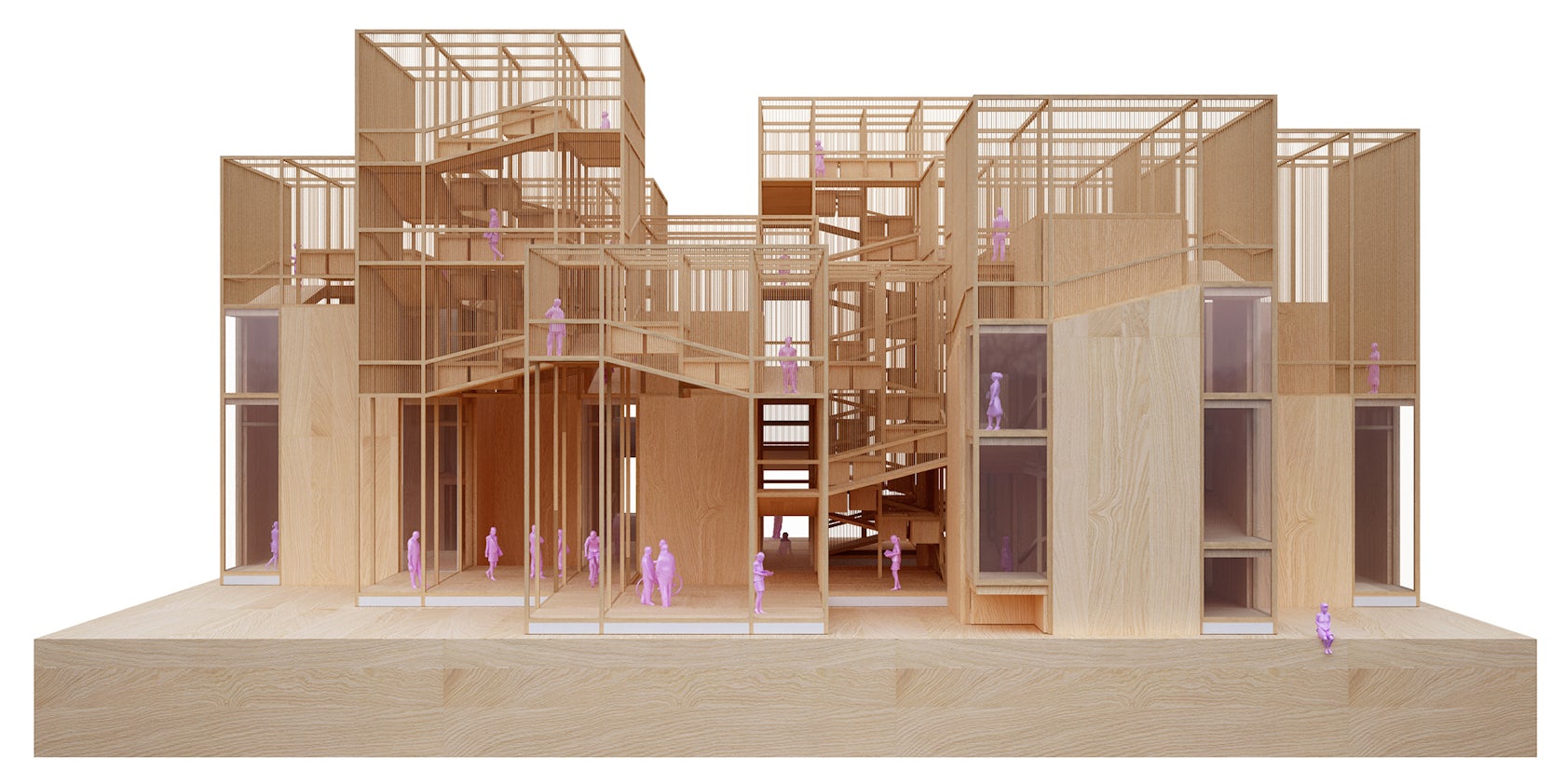
The model helped convince the competition jury for the Horticultural Expo in Beijing of the firm’s powerful vision for the site both during and after the event takes place in 2019.
Which other penda projects on the drawing board are you most excited about?
For the past two years, we were working on modular bamboo structures. At the moment, one set of those structures is getting built as an ecological Village, the “Wild Child Village” in Ecuador. A documentary filmmaker from LA contacted us a while ago to work together on a vision for a village that combines natural materials, a modular building system and an ecological mind-set on the coasts of Ecuador.
We are also excited what 2017 holds for our small firm. We are expanding and open a second branch in Salzburg, Austria, soon. That is a great step for us and puts us on a wider foundation going into the next years. We set up shop around three years ago and are still toddlers in an architectural lifetime. Like toddlers, our main goal is to experience, push the envelope and be incredibly passionate about the projects that we work on. Bringing together the Eastern and the Western approach in architecture, we want to learn from each other’s culture and differences. Now we have an office in the East and the West [in both Beijing and Vienna], we can continue doing that on a much wider platform, and that’s exciting!

The project constitutes one of penda’s most ambitious to date.
As a juror at this year’s A+Awards, what qualities will you be looking for when deciding on the winning designs?
I think as a juror, you are looking for ideas and concept that are smarter than you could have thought of yourself. Architecture needs to surprise so people can get engaged. I love to be surprised by architecture solutions as well and I keep an eye out for those.
One thing I can say is that personally 2016 was the most inspiring year for me. Architectural outlets were filled with amazing projects throughout the globe, and I really look forward to seeing many of those in this year’s A+Awards.
Enter this year’s A+Awards for a chance to be recognized by Ma Yansong and a host of other incredible architects.Click here to submit your project before the final deadline this Friday, Jan. 27.







